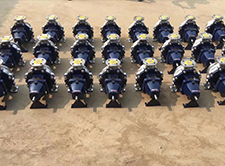Zulu
- Afrikaans
- Albanian
- Amharic
- Arabic
- Armenian
- Azerbaijani
- Basque
- Belarusian
- Bengali
- Bosnian
- Bulgarian
- Catalan
- Cebuano
- Corsican
- Croatian
- Czech
- Danish
- Dutch
- English
- Esperanto
- Estonian
- Finnish
- French
- Frisian
- Galician
- Georgian
- German
- Greek
- Gujarati
- Haitian Creole
- hausa
- hawaiian
- Hebrew
- Hindi
- Miao
- Hungarian
- Icelandic
- igbo
- Indonesian
- irish
- Italian
- Japanese
- Javanese
- Kannada
- kazakh
- Khmer
- Rwandese
- Korean
- Kurdish
- Kyrgyz
- Lao
- Latin
- Latvian
- Lithuanian
- Luxembourgish
- Macedonian
- Malgashi
- Malay
- Malayalam
- Maltese
- Maori
- Marathi
- Mongolian
- Myanmar
- Nepali
- Norwegian
- Norwegian
- Occitan
- Pashto
- Persian
- Polish
- Portuguese
- Punjabi
- Romanian
- Russian
- Samoan
- Scottish Gaelic
- Serbian
- Sesotho
- Shona
- Sindhi
- Sinhala
- Slovak
- Slovenian
- Somali
- Spanish
- Sundanese
- Swahili
- Swedish
- Tagalog
- Tajik
- Tamil
- Tatar
- Telugu
- Thai
- Turkish
- Turkmen
- Ukrainian
- Urdu
- Uighur
- Uzbek
- Vietnamese
- Welsh
- Bantu
- Yiddish
- Yoruba
- Zulu
Telephone: +86 13120555503
Email: frank@cypump.com
Nov . 10, 2024 15:41 Back to list
Chemical resistant tubing solutions for efficient peristaltic pump applications in various industries
Chemical Resistant Tubing for Peristaltic Pumps An Essential Component for Fluid Transfer Systems
When it comes to fluid transfer systems, especially those used in laboratories, industrial applications, and medical environments, the reliability and efficiency of the system are paramount. One crucial component that significantly affects performance is the tubing utilized in peristaltic pumps. These pumps are favored for their aseptic operation and precise flow rate control, making them ideal for transferring various fluids, including chemicals, slurries, and biological fluids. However, to ensure longevity and functionality, the selection of the appropriate chemical-resistant tubing is essential.
Understanding Peristaltic Pumps
Peristaltic pumps operate by mechanically compressing and releasing a flexible tube to move fluids in one direction. This mechanism minimizes contamination, making them suitable for applications where hygiene is critical, such as pharmaceuticals and food processing. The tubing itself forms the only contact point between the pump and the fluid being transferred, thus, selecting the right material is crucial.
Importance of Chemical Resistance
The fluids transferred can vary widely in terms of viscosity, acidity, and reactivity. As such, the tubing must withstand the particular chemical properties of the substances being pumped. Chemical resistance refers to the tubing’s ability to resist degradation or breakdown when in contact with various chemicals, including acids, bases, solvents, and biological fluids. Tubing that is not chemically resistant may experience issues like swelling, embrittlement, or discoloration, which can lead to pump failures, leaks, or contamination of the fluids being handled.
Common Materials for Chemical Resistant Tubing
1. Silicone Rubber Known for its excellent flexibility and high-temperature resistance, silicone rubber is widely used in peristaltic pump applications. It is biocompatible and suitable for food and medical applications. However, its chemical resistance is limited against certain solvents and oils.
2. TPU (Thermoplastic Polyurethane) TPU tubing is highly versatile, offering good chemical resistance, abrasion resistance, and flexibility. It is suitable for a wide range of chemicals, making it a popular choice for industrial applications. Its durability ensures that it can handle rigorous pumping without degradation.
3. FEP (Fluorinated Ethylene Propylene) FEP tubing boasts remarkable chemical resistance and can handle a wide range of acids and bases. Its smooth inner surface ensures reduced friction, which contributes to prolonged pump life. FEP also has excellent thermal stability, making it suitable for both high and low-temperature applications.
4. PTFE (Polytetrafluoroethylene) Often regarded as the gold standard in chemical resistance, PTFE tubing can handle almost all chemicals, including strong acids and bases. However, it is less flexible than other materials and may require special fittings for use in peristaltic pumps.
chemical resistant tubing for peristaltic pump

5. Viton® This fluoropolymer is known for its high resistance to aggressive chemicals and elevated temperatures. It is particularly beneficial in applications where harsh solvents or fuels are involved.
Factors to Consider When Choosing Tubing
When selecting tubing for peristaltic pumps, several key factors must be considered
- Chemical Compatibility Always consult compatibility charts to ensure the chosen material will withstand the specific chemicals being pumped.
- Temperature Range Ensure that the tubing can handle the temperature extremes of the application, including any potential heat generated during operation.
- Diameter and Wall Thickness These dimensions affect flow rates and pressure ratings. Select tubing that matches the pump specifications for optimal performance.
- Aseptic Requirements For applications involving sensitive biological fluids, ensure that the tubing material is biocompatible and suitable for sterile processing.
- Cost vs. Longevity While high-end materials like PTFE may be more expensive upfront, their long lifespan can lead to cost savings in the long term.
Conclusion
Choosing the right chemical-resistant tubing for peristaltic pumps is critical for ensuring efficiency, longevity, and safety in fluid transfer applications. By understanding the properties of various tubing materials and considering the specific requirements of your application, you can achieve optimal performance from your peristaltic pump system, thereby ensuring reliability and professionalism in your operations. Proper tubing selection goes a long way in maintaining the integrity of both the system and the fluids being transported.
-
Custom Drilling Mud and Slurry Pump Supplier - High Efficiency, Tailored Solutions
NewsJun.10,2025
-
Supply Vertical Submersible Sewage Pump High-Efficiency WQ/QW Pumps Supplier
NewsJun.10,2025
-
Premium Sewage Ejection System & Pumps Efficient Waste Removal
NewsJun.09,2025
-
Premium Wholesale Slurry Pump Impellers Durable & Efficient Slurry Handling
NewsJun.09,2025
-
Top Sewage Pump Companies Durable Industrial Solutions for Efficiency
NewsJun.09,2025
-
Heavy Duty Slurry Pumps - OEM High Performance & Bulk Wholesale
NewsJun.09,2025










